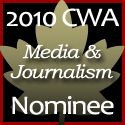 When Barack Obama was building support for his leadership and presidency, he played it very smart.
When Barack Obama was building support for his leadership and presidency, he played it very smart.He knew that many Republicans had grown weary of George Bush and Karl Rove style politics, so he reached out to them in a spirit of cooperation, and in his case did it in part by invoking the legacy of Ronald Reagan, a man who has become an icon to the GOP.
Now no doubt Obama realized that much of the Reagan legacy is a myth, and while his Republican opponents stirred up images of the Gipper, he could have very easily broken down that myth. But that would have been akin to telling young children that there was no Santa Claus.
So instead of reminding the Religious Right that Reagan legitimized abortion in California, or the no-tax crowd that he was behind what was then the largest tax increase in American history (as president in 1982, just a year after his much better-known rate cut), he instead tapped into the two positives of the Reagan presidency: hope and optimism.
Senator Barack Obama made it clear in early 2008 that Reaganism was playing some role in his thinking as he mapped out his own more progressive route to the White House—but the specifics of what Obama was getting at were open to debate. "Ronald Reagan changed the trajectory of America in a way that Richard Nixon did not, and a way that Bill Clinton did not," Obama told the editorial board of the Reno Gazette Journal in January 2008. Seeking to elaborate, the Democratic senator said that "we want clarity, we want optimism, we want a return to that sense of dynamism and entrepreneurship that had been missing." (1)Obama was not going to be their enemy, even though many of Reagan's policies went against everything he stood for:
More than twenty years after Reagan's presidency, one must dig hard to learn of his failure to connect with black voters or other minority groups, or that he failed to address issues such as AIDS or homelessness in any meaningful way, or the sense that many had in the late 1980s that America had been overrun by greed. (1)Michael Ignatieff knows that in order to reach out to disgruntled former Progressive Conservatives (like myself), he won't do it be denouncing conservatism. He will do it by only denouncing the policies of this current government that go against the very nature of conservatism, and in many cases, the very nature of Canadians.
NDP insider Brian Topp, has a column in the Globe and Mail, in which he discusses Ignatieff's "big tent" theory:
This spring’s curious debate over the idea of building a single big progressive party highlighted the deep vein of loathing and fear that many in Michael Ignatieff’s Rosedale/Bay Street-centred blue Liberal faction hold for progressive policies and people. As they have made clear both publicly and privately in many venues, they feel closer to the Conservatives than to the New Democrats on many issues.I like Brian Topp very much but he is dead wrong. The Liberals have never really been left or right, and in fact throughout the 60's to the 90's, the electorate voted on platform, rather than ideology, because there was little difference between the two major parties.
This being so, even after an election debacle on the scale suggested by these numbers, perhaps Mr. Harper could hope to work out another informal modus vivendi with the blue Liberals, whose party would be returning to the repair shop for another long visit. In which case, on these seat projections, Mr. Harper would govern with a de facto 212-seat majority, much as he is doing now.
Stephen Harper suggested this himself, when he said that they must eradicate Red Tories, whom he called "Pink Liberals" from his Reform movement, if agreed to take over the old PC Party. The trick for him, as his then campaign manager Tom Flanagan put it, was to convince Canadians that they were moving to the left when they were not. (2)
The NDP on the other hand, have always been to the left and as a result have made themselves enemies of big business. There is nothing wrong with that and I agree with most of their policies. In 2006 they would have been the ideal party to govern. We had a massive surplus and the economy was strong.
But during an economic upheaval, they are not seen, right or wrong, as the party to be able to handle the financial store. It's a time for realistic options.
I think that both the NDP and Liberals agree that more stimulus is needed, and less money going to prisons and fighter jets. They also both agree that this is not the time to be giving massive corporate tax cuts and they both support maintaining the long from census.
But those on the right will never vote NDP. They still equate them with Communism (which is wrong). But if there is a good centrist party, which I believe the Liberals are, they could support that.
Now I'm not talking about Harper's "base". That small group that poisons the comments sections of on-line publications with attacks on women, gays and ethnics. They are the old pro-Anglo, pro-gun crowd, that have found a home in the Reform movement and are going nowhere.
Topp also brings up the Ontario coalition when Bob Rae as leader of the NDP entered into an agreement with the Liberals of David Peterson, as a precedent to form a government if Harper ends up with another minority.
There is a definitive Canadian precedent. Frank Miller’s Conservatives were handed 52 seats in the 1985 Ontario election. But David Peterson’s Liberals formed a government with 48 seats, thanks to an accord with Bob Rae’s 25 New Democrats.And it was a good coalition. With the pressure of the NDP Ontario moved forward.
The agenda that Rae demanded was wildly popular with the electorate, and the Ontario economy—recovering nicely, it seemed, from the early eighties recession—was more than able to accommodate the necessary increase in government spending. Environmental laws were toughened, the scope of rent controls widened. Money was spent on child care and affordable housing. Equal rights for homosexuals were entrenched in the province's human rights code. First steps were taken towards pay equity for women. And most important, the Liberals moved to ban extra billing by doctors, an increasingly common practice across the province. The doctors reacted by going on a limited strike. The government stared them down. The strike collapsed. (3)But look what happened when Bob Rae became premier. The right-wing became his 'Tea Party', especially the National Citizen's Coalition (Harper's old stomping ground) and their spin-off group Ontarians for Responsible Government. They were relentless:
Throughout the government of NDP leader Bob Rae, Gerry [Nicholls. Harper's VP when he was President of the NCC] headed the NCC project group, “Ontarians for Responsible Government”. Among numerous activities this group erected anti-Rae billboards throughout the province. This style of billboard advocacy was imitated nationwide and was featured in Campaigns and Elections magazine. Besides overseeing and co-coordinating the NCC's overall political and communication strategies, Gerry also acted as the group’s media spokesman, edited its newsletters and wrote its op-eds, news releases and fundraising letters. (4)And Bob Rae actually handled the economy quite well, considering that we were in the middle of a double dip recession:
The National Citizens Coalition put up billboards with Rae and Stalin side by side, and rich stockbrokers led a protest parade to Queen's Park and shouted for Rae's head. He never had a chance. Bay Street and big business shunned him and his government like they were lepers. Still, Rae managed to save the jobs of the Algoma Steel Workers in Sault Ste. Marie, Ont., and the jobs of the workers in the De Havilland plant in Toronto. The media was hostile to Rae's government. Today the media keeps talking about his NDP government, but never mention that he presided over the worst Ontario recession since the Great Depression. (5)These groups would do the same to Jack Layton. What we need is a good centrist party who can work with both sides, and help to move this country forward.
We need the NDP. We need the Bloc. We need the Green. And we even need the Conservatives, those who represent the Libertarian crowd, for balance. They all have so many good ideas and a genuine concern for this country. But we also need Michael Ignatieff as prime minister. I believe that with every fibre of my being.
If you read his Rights Revolution you know where he stands on the issues that are important to us. And he has a very strong caucus, including an astronaut, Marc Garneau, who believes in science. Remember science?
And he will listen to experts. Remember experts?
And he will let his MPs talk. Remember when our elected officials got to talk.
Ah. I can hardly wait.
Sources:
1. Tear Down This Myth: The Right-Wing Distortion of the Reagan Legacy, By Will Bunch, Free Press, ISBN: 978-1-4165-9762-9 5, Pg. 20-21
2. The Man Behind Stephen Harper: The new Conservative Party has tasted success and wants majority rule. If Tom Flanagan and his Calgary School have their way, they’ll get it without compromising their principles.
by Marci McDonald, The Walrus, October 2004
3. Promised Land: Inside the Mike Harris Revolution, By John Ibbitson, 1997, ISBN: 0136738648, Pg. 35
4. About Gerry from Gerry Nicholl's blog.5. Bob Rae would make a great prime minister, By Larry Zolf, CBC News Viewpoint, May 9, 2006



No comments:
Post a Comment